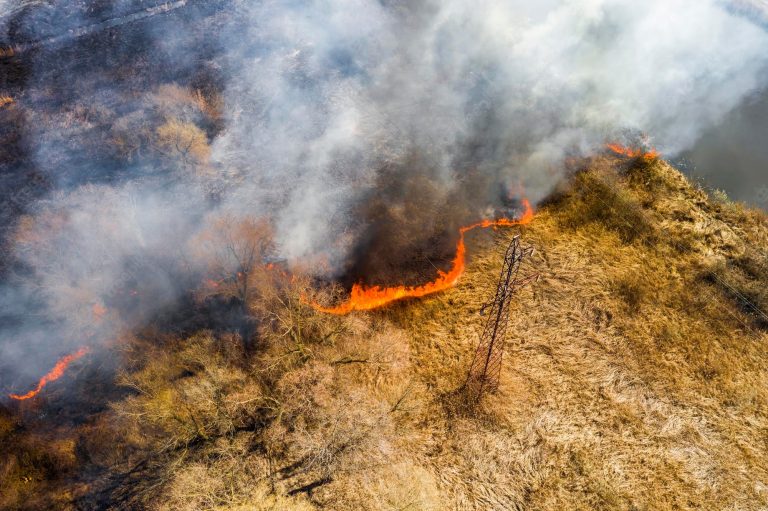Environmental Science | Scope, Elements, and Importance
Introduction to Environmental Studies
Environmental study is multi-disciplinary as it encompasses various other studies like chemistry, physics, medicinal science, life science, agriculture, public health, sanitary engineering, etc. It deals with all the physical phenomena in the air, water, and soil ecosystem. It studies the sources, causative agents, reactions, medium of transport, effect, and fate of the biological species and, most specifically, human beings.
The Environment may be defined as the sum of surrounding external conditions that influence the development and growth of people, animals, or plants,
Douglas and Holland defined Environment as “the total of all the external forces, influences, and conditions which affect living organisms’ life, nature, behavior, growth, development, and maturation.
According to Boring, ‘A person’s environment consists of the sum total of the stimulation which he receives from his conception until his death.’
Stimulations are various forces, such as physical, intellectual, economic, political, cultural, social, moral, and emotional.
The above discussion involves three aspects:
1. What is surrounded?
The answer to the first question is living things in general and, more specifically, human beings.
2. By what Surrounded?
The second question deals with the physical attributes which become Environment.
3. Where are you Surrounded?
The answer to the third question lies in nature and its physical component, viz; land, air, water, etc., that support and affect life in the biosphere.
Scope of Environment
The scope of the Environment consists of four sections:
1. Atmosphere
“The protective blanket of gases, surrounding the earth is called atmosphere.” The atmosphere is composed of nitrogen (78%) and oxygen (21%), besides argon (0.93%), carbon dioxide (0.03%), and trace gases.
The atmosphere has great significance as:
- It sustains life on this planet.
- It saves us from the hostile environment of outer space.
- It also absorbs most of the cosmic rays from outer space and a major portion of the electromagnetic radiation from the sun. Exposure to cosmic rays includes cancer, central nervous system effects, cataracts, circulatory diseases, and acute radiation syndromes.
- It transmits only here ultraviolet (400 nm), visible (400 -750 nm), near-infrared radiation (800 – 2500 nm), and radio waves (1 mm to 100 km) while filtering out tissue-damaging ultraviolet waves below about 300 nm.
If you want to watch a video related to the importance and scope of Environmental Studies, Watch this video and subscribe to the channel: Botany Live
2. Hydrosphere
It comprises all types of water bodies like oceans, seas, lakes, rivers, streams, reservoirs, polar icecaps, glaciers, and groundwater.
- In nature, 97% of the earth’s water supply is in the oceans
- About 2% of the available water is locked in the polar icecaps and glaciers.
- Only about 1% is available as fresh surface water rivers, lakes, streams, and
- groundwater and can be used for human consumption and other uses.
3. Lithosphere
The lithosphere is the outer mantle of the solid earth. It consists of minerals, organic matter, air, and water.
4. Biosphere
It indicates the region of the earth’s surface and atmosphere inhabited by living organisms. The region above or below the earth’s surface where life exists is called the biosphere. Biosphere indicates the land of living organisms and their interactions with the Environment, viz atmosphere, hydrosphere, and lithosphere.
Element of Environment
Different physical, biological, and cultural elements inter-related individually and collectively to constitute Environment. These elements of the Environment can be explained as under:
(1) Physical elements
Physical elements include space, landforms, water bodies, climate soils, chemicals, herbicides rocks, and minerals. Herbicides have a great impact on human and soil-inhibiting organisms. They determine the variable character of the human habitat, its opportunities, and its limitations.
(2) Biological elements
Elements such as plants, animals, microorganisms, and men constitute the biological elements of the Environment.
(3) Cultural elements
Elements such as economic, social, and political elements are essentially manmade features and are referred to as cultural elements.
Importance of Environmental Study
Environment studies educate us about the importance of protecting and conserving our indiscriminate release of Pollution into the Environment. At present, many environmental issues have grown in size and complexity day by day, threatening the existence of mankind on earth. The environmental study discusses these issues and provides effective suggestions. Environment studies have become significant for the following reasons:
1. Global issue
It has been well-recognized that environmental issues include global warming, ozone depletion, acid rain, marine Pollution, and biodiversity. So these must be tackled with international efforts and cooperation.
2. Environmental concerns and development
Development has given birth to urbanization, industrial growth, transportation system, housing, etc. However, it has become phased out in the developed world.
3. Explosive increase in Pollution
The current world population is 8.01 billion as of March 2023, according to the most recent United Nations estimates elaborated by Worldometer. Pakistan, ranking at number 5, has a current population of Pakistan is 230 million as of 3rd March 2023 (3.45% of the world’s population). Pakistan has a population density of 287 per km2, which is critically alarming worldwide (worldometers.info). This increase in population has overburdened limited available resources. Agricultural experts have recognized soil health problems like deficiency of micronutrients and organic matter, soil salinity, and damage to soil structure to meet the demands of food, fiber, and shelter.
Types of Environment
The Environment is of three types, as explained by Kurt Lewin.
1. Physical Environment
It refers to the geographical zone or physical conditions where an individual lives. The physical environment greatly influences humans:
- In cold countries, people are of fair complexion, while in Asian and African countries, in hot countries, people are of dark complexion.
- An individual’s physique depends on climate conditions as the individual tries to adjust to his Environment.
- The human working efficiency also depends on the climatic conditions.
2. Social Environment
Social Environment includes an individual’s social, economic, and political condition. The Social Environment influences an individual’s life, nature, and behavior.
3. Psychological Environment
Physical and social environments are common to individuals in specific situations. However, every individual has his psychological Environment. According to Kurt Lewin, the psychological Environment is a “life space” that someone inhibits, and it greatly impacts an individual’s personality. A person himself and his life goal form the psychological Environment. If he cannot overcome the barriers, he can get frustrated and ultimately change his goal for a new psychological environment. Somehow or the other, an individual needs a peaceful psychological environment to perform effectively.
Structure of Environment
Components of the Environment:
The Environment is both physical and biological. It includes both living and non-living components.
(i) Physical Environment
The Physical Environment is classified into three broad categories viz.
- Solid (Lithosphere)
- Liquid (Hydrosphere) and
- Gas (Atmosphere)
The scientists have classified them into smaller units based on different spatial scales, e.g.
- Mountain Environment
- Glacier Environment
- Plateau Environment
- Coastal Environment
(ii) Biological Environment
The biological part of the Environment consists of the following:
- Plants (flora)
- Animals (fauna).
All organisms work to form their social groups and organizations at several levels to form a social Environment. In this social Environment, the organisms work jointly to derive matter and energy through different trophic levels. This process gives birth to the economic Environment. Man claims to be the most skilled and civilized of all organisms. This is the reason why his social organization is most systematic. A man can function physically, socially, and economically in the biotic Environment for a steady flow of matter and energy in an environment.
Aspects of the Environment:
(i) The Physical Aspect
A man always needs basic elements of the physical environment, like habitat (space), air, water, and food. Besides, like other biological populations, he releases wastes into the ecosystem.
(ii) The Social Aspect
Socially, a man performs the following functions:
- Forming social organizations,
- Establishing social institutions,
- Formulating policies, laws, and principles
- Protecting his existence, interest, and social welfare.
(iii) The Economic Aspect
The economic man develops and utilizes resources from the physical and biotic Environment with his abilities and skills. The economic function is important as it drives matter and energy from one ecosystem component to the other.
- High-energy protons and atomic nuclei moving through space at the speed of light.
- Clouding of the eye lens.
- Ocean is a far larger body of open water
- Sea is a smaller part of the Ocean enclosed by land
- Check the exact population, death rate, and birth rate of the word/region by this worldometer.info
I’m Dr Qaiser Maqsood (PhD), a dedicated researcher and expert in Biological Sciences, Gardening, Bio-Diversity, Ecology, and Environmental Sciences. I’m much concerned about Environmental Pollution, Climate Change, Plantation, Gardening, and Global Warming. My passion is to explore innovative solutions in all these fields.
Be aware that we have ONLY ONE EARTH. Protect it!!






